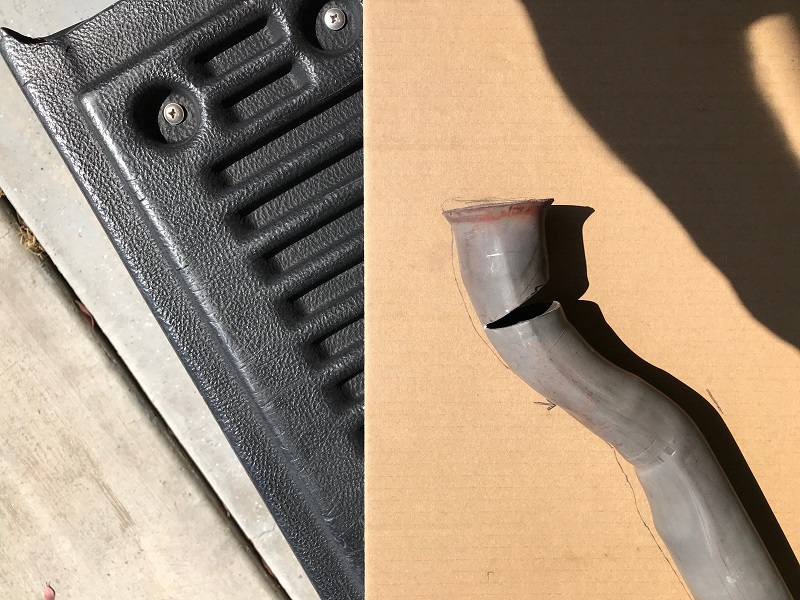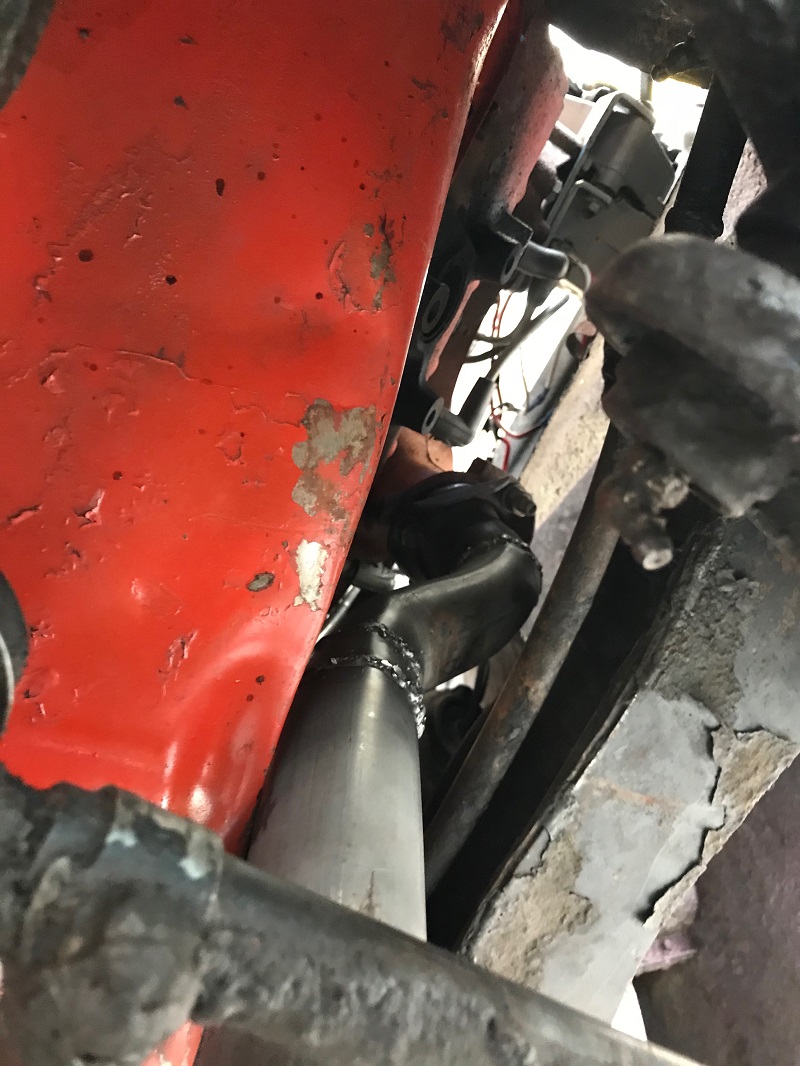For reference:
Page number = manual number, not the PDF page number
Diagram number = number on the diagram "plate" (used generically, must look up part number from tables following the diagram.
Part number is the specific Studebaker part number.
TPO = The Previous Owner
[Purpose]
As shown at the beginning of this ordeal - TPO installed a 327 into the 50' Commander, thus replacing the flat head 6. While this is cool and all - it does have some issues. The most important was the steering reach arm clearance. The reach arm (Studebaker part number 526568), shown on page 149 of the 50' Shop manual, moves not only forwards and back but towards the engine when it gets to the fullest extent of steering wheel rotation (left and right). This is due to its connection to the Bell Crank on the engine cross member.
While the original engine has plenty of clearance the 327 replacement does not. This meant that as you neared full rotation of the steering wheel, the reach arm would hit the drivers side exhaust...
[Solution]
Note: We are NOT a welders. Welders are talented people with years of experience.
While we could have sent this out to a local shop we thought, "What is the worst that could happen?", and "How hard could it be?" (famous last words) As such we cut the exhaust, unbolted it and did a lot of measuring.
TPO did put in two ~45 degree bends in the exhaust but the arm was hitting the point between the bends. We used CAD (Cardboard Assisted Design) to outline the shape of the exhaust and to mark how much we needed to move the pipe towards the engine. We then made our first cut.
Putting this onto the CAD outline and then closing the cut shows we did enough
After welding this up we lowered a small light into the pipe and looked for any pinhole leaks and yep, we repaired ALL OF THEM. (sorry no photos at this point)
We attempted to fit the pipe back to the manifold knowing that it will not fit. We had the clearance for the reach arm but moved the pipe some much that it now hit the engine block. We actually expected this and made a few "relief cuts" to angle the pipe back towards ground.
Again, we are NOT welders but it works with no leaks.
[Installation]
While the "per-modified" pipe came out easily, the new "overly bendy" version took some fiddling! Ultimately we got it in and it works fine or so we thought.
Pictured from below, pipe comes down alone engine, showing the reach arm with more clearance.
Lastly we punted and used an exhaust clamp to reattach the cut/bent/welded pipe back to the rest of the system.
As repeatedly stated, We are NOT welders! We felt that our welding was not good enough to attempt this final weld which could only be done in place!
[Completed Work]
While this is massively better then before we did fail. When you turn the steering wheel ALL THE WAY it does still hit the exhaust but only in the last 1/8 (or less) of a rotation. Our short term solution was to adjust the Steering Knuckle Stop Screw (back of the hub) to limit the full extent of turning. While this will reduce the turning radius it won't be much.
As expected, once we started on the tie rods (future post) we where able to get to the "Steering Knuckle Stop Screw" (50' shop manual page 157). Amazingly while the manual has a section on this we could not find any other reference in the manual or parts catalog. It can be seen in figure 295 which details the knuckle but is part of the "lower support". we would have thought that because it could be removed from the lower support it would have detailed a bit.
By simply loosening the rear locking nut we were able to extend the stop screw. Because the stop screw will intentionally hit the back of the brake backing plate it will limit the rotation of the steering knuckle. Working backwards this limits the travel of the tie rods, which limits the rotation of the bell crank, which limits the reach arm, which limits the lateral movement (towards the engine) of the reach arm (and ultimately limits the rotation of the steering wheel). THIS is what we wanted - to reduced the reach arm lateral movement and NOW we are not hitting the exhaust. It was a small adjustment as we where barely touching the exhaust.
It is also noted that the exhaust system does NOT have mufflers, which our nieghbors pointed out to us.
Update: The entire exhaust system was replaced during the engine mount relocation project.

